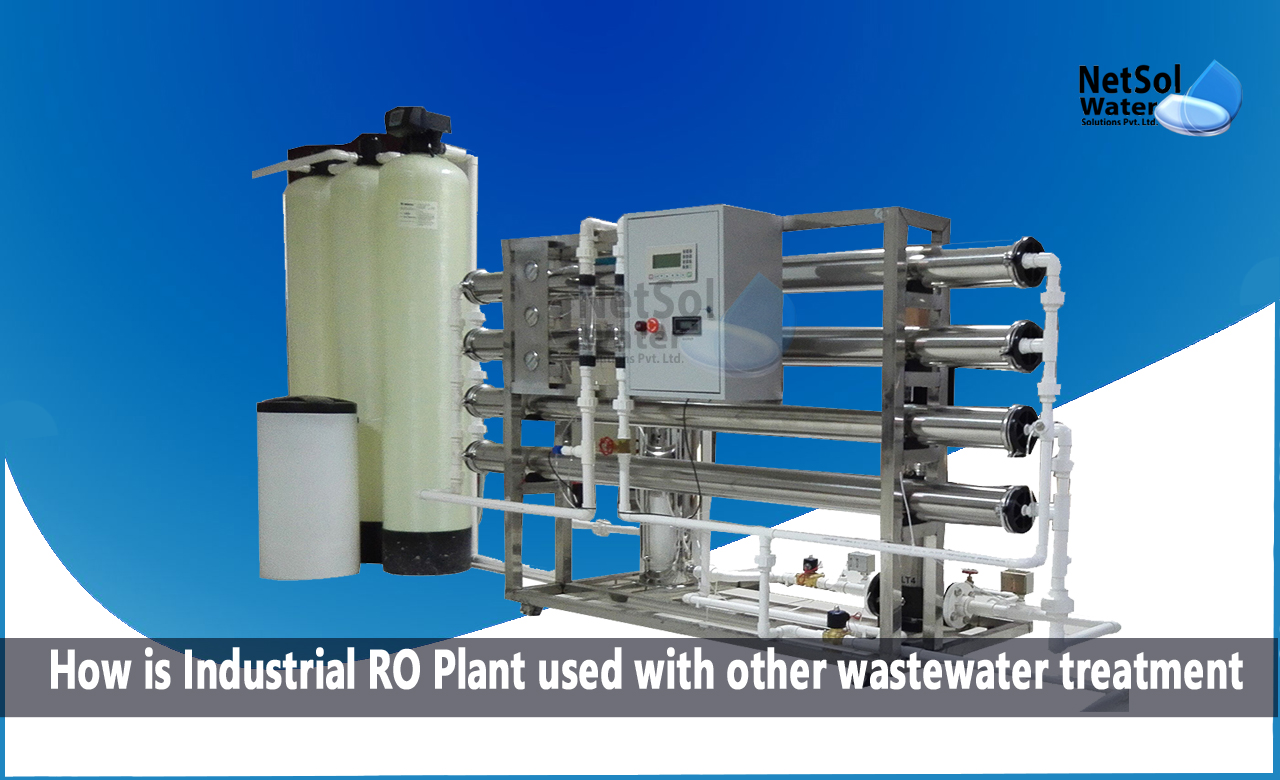How is Industrial RO Plant used with other wastewater treatment?
Industrial RO systems treat and disinfect chemically and toxically contaminated water, so that it can be utilized in different processes. It eliminates a variety of impurities from the water, including minerals, lead, ions, organic matter, and other impurities that could be hazardous, if used improperly.
Further advantages are provided by combining this operational Industrial RO Plant, with other wastewater treatment technologies.
Now, let’s understand how Industrial RO Plant is used with other wastewater treatment procedures!
1: Use of Industrial RO Plant with UV Technology
Modern wastewater purification processes have developed into a practical way to get access to clean, safe water as a result of improvements in water purification technology.
Reverse osmosis (RO), ultraviolet (UV), and ultrafiltration (UF) are three highly effective methods, for eliminating impurities from water, but pairing a RO plant with UV creates the ultimate water treatment facility.
For instance, even though the water tank's UV lamp eliminates all pathogens, the dead microorganisms still float around in the water. RO water filtration enters the picture to address this issue. Fine holes in RO membranes prevent pollutants from passing through, and UV destroys the remaining pathogens.
2: Use of Industrial RO Plant with ZLD Treatment
The greatest and most effective desalination technology at the moment is RO. The goal is to employ RO to recover as much evaporated water as feasible. Evaporation and Crystallization, the most fundamental form of ZLD system, aims to recover 90% of the water and achieve 100% crystallization.
The procedures or methods listed below are used to increase the recovery rate of RO with ZLD:
1. The quick 2-stage process (different membranes and pressures are used in each stage).
2. Moderate precipitation or softening (more chemicals used).
3. Biology-based pre-treatment.
4. High-performance RO procedure (HERO).
3: Use of Industrial RO Plant in Tertiary Sewage Treatment Plant
The removal of salts and other dissolved solids from wastewater and sewage streams, can be somewhat challenging. Conventional filtration, coagulation, and sedimentation are ineffective at removing dissolved materials. These could be able to lower TDS somewhat, but extra treatment may be necessary when the amount of total dissolved solids (TDS), is especially high.
Reverse osmosis tertiary sewage treatment will therefore enable the safe and legal release, or recycling of this wastewater stream. Reverse osmosis is frequently employed as a tertiary treatment to get rid of salts and other dissolved materials. In this way, water can be safely disposed, reused for irrigation or other non-potable purposes.
Water streams with TDS concentrations greater than 47,500 mg/l are normally not suitable for the RO process.
4: Use of Industrial RO Plant with Electrolysis
Anion-selective membranes (AMs) and Cation-selective membranes (CMs) alternately, are used in the membrane process of electrodialysis, which is carried out between an anode (+) and a cathode (-). Anions will flow towards the anode, whereas cations will move toward the cathode, as a result of the applied electric field.
An ED-RO arrangement for treating high saline brines can also boost RO. For instance, saline water with a TDS of 4000 ppm can be treated with RO, to make it pure enough to use after being purified with ED to reduce its TDS by half.
How can we assist?
Netsol Water assists its clients in achieving their goal of treating wastewater, by using high-quality and advanced wastewater treatment techniques and Industrial RO Plants.
You don't need to be concerned about the services, as we are one of the most affordable businesses dedicated to protecting water resources. Further, to discuss your needs, contact us at 9650608473, or send an email to enquiry@netsolwater.com with your inquiry.



